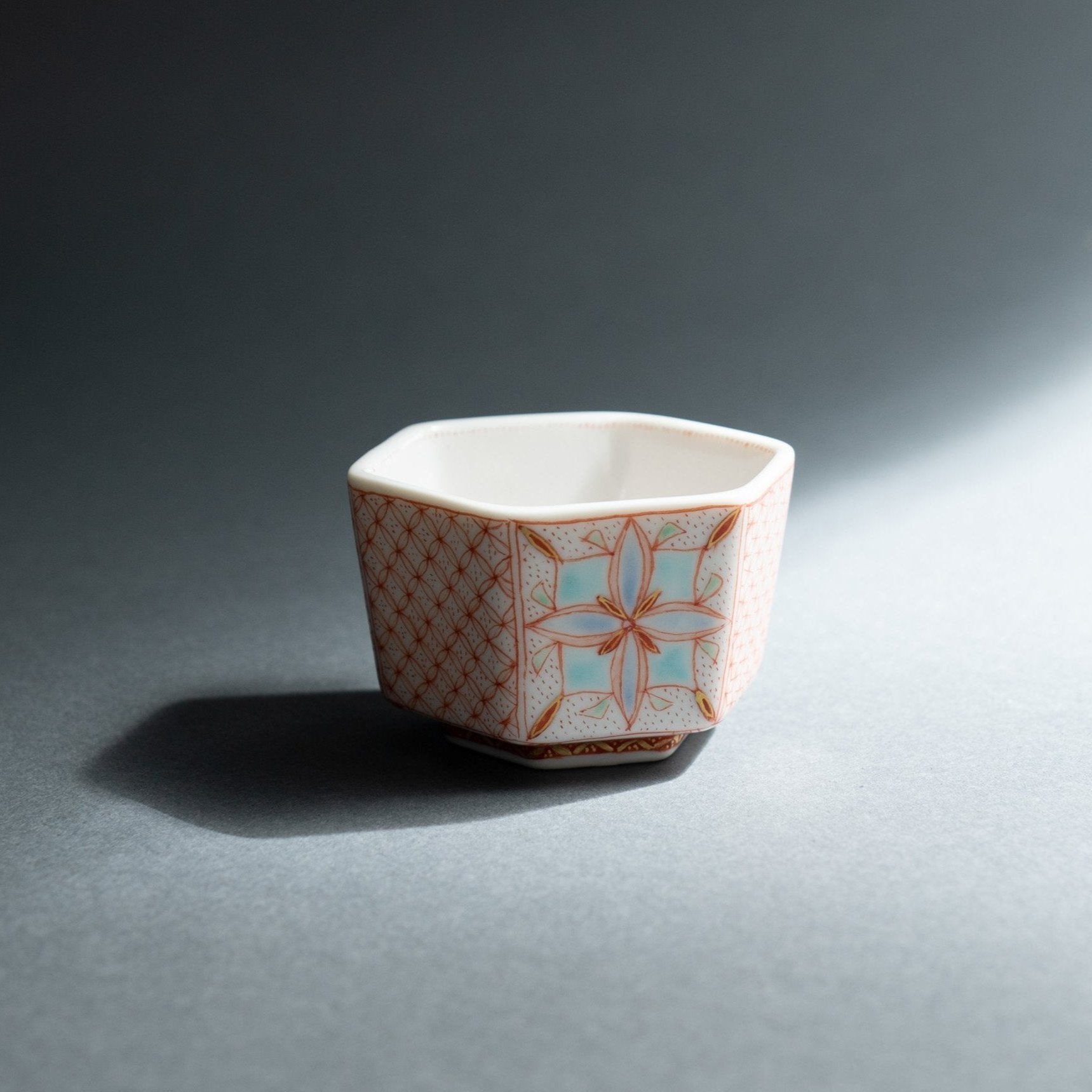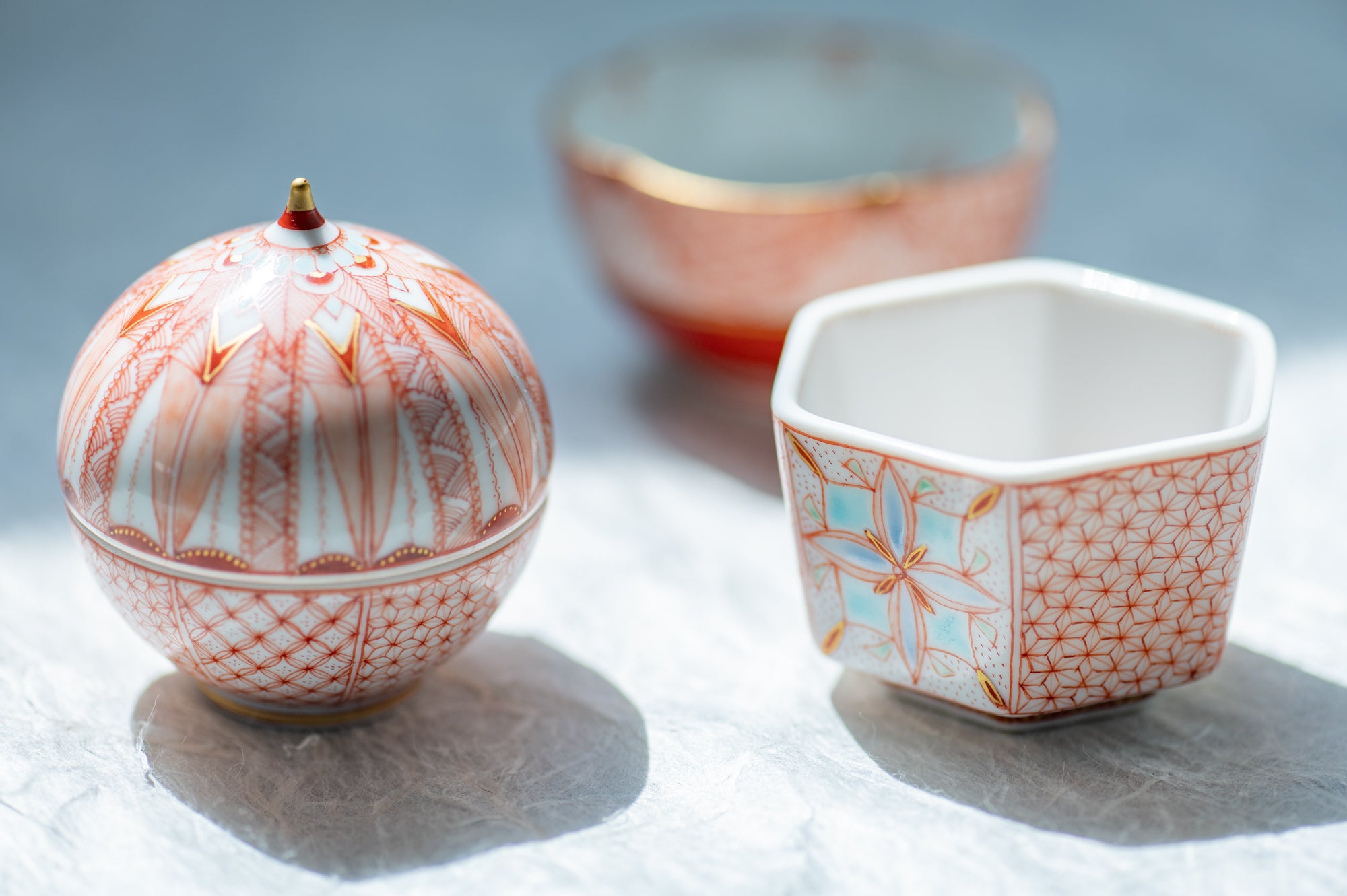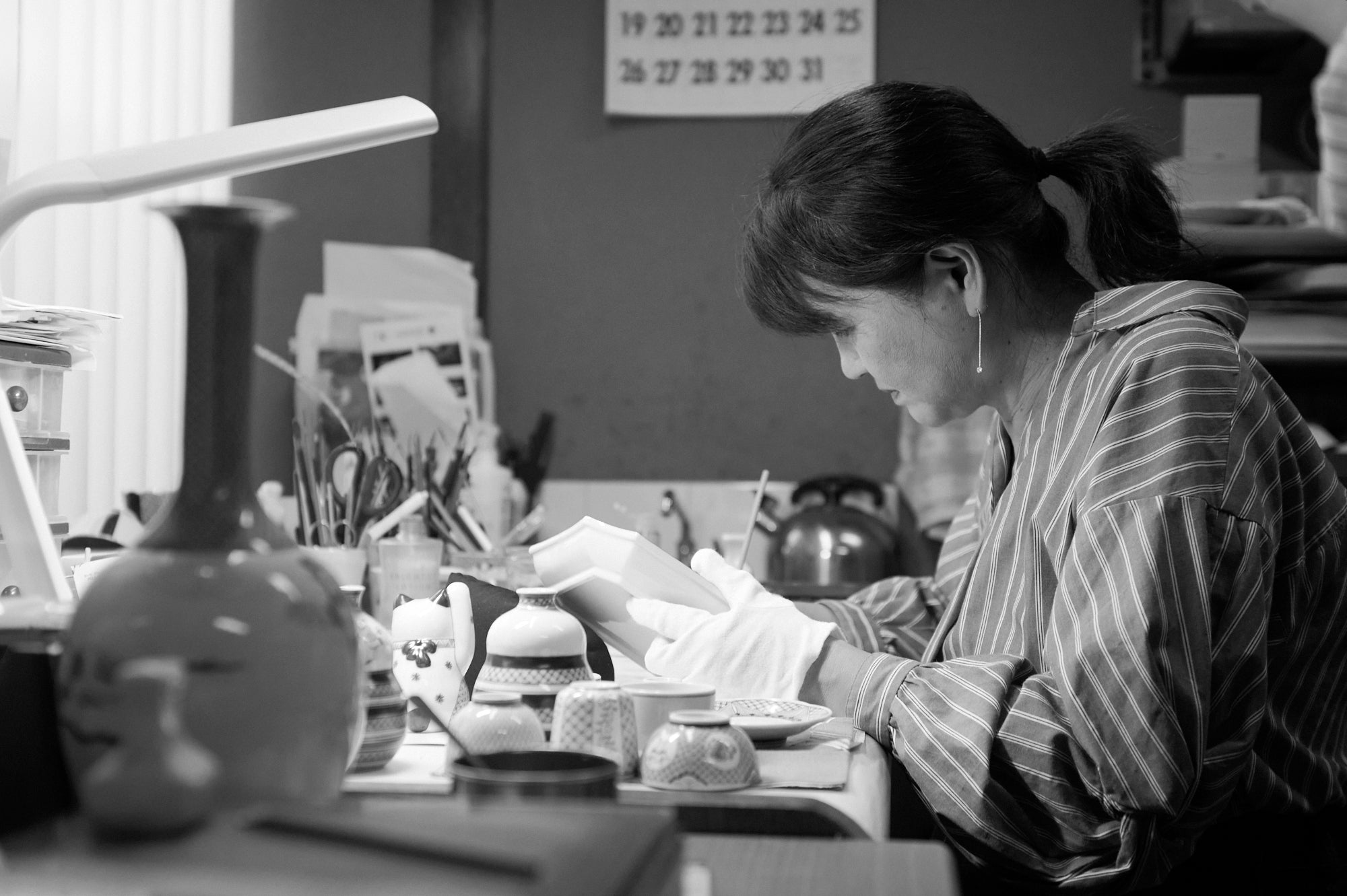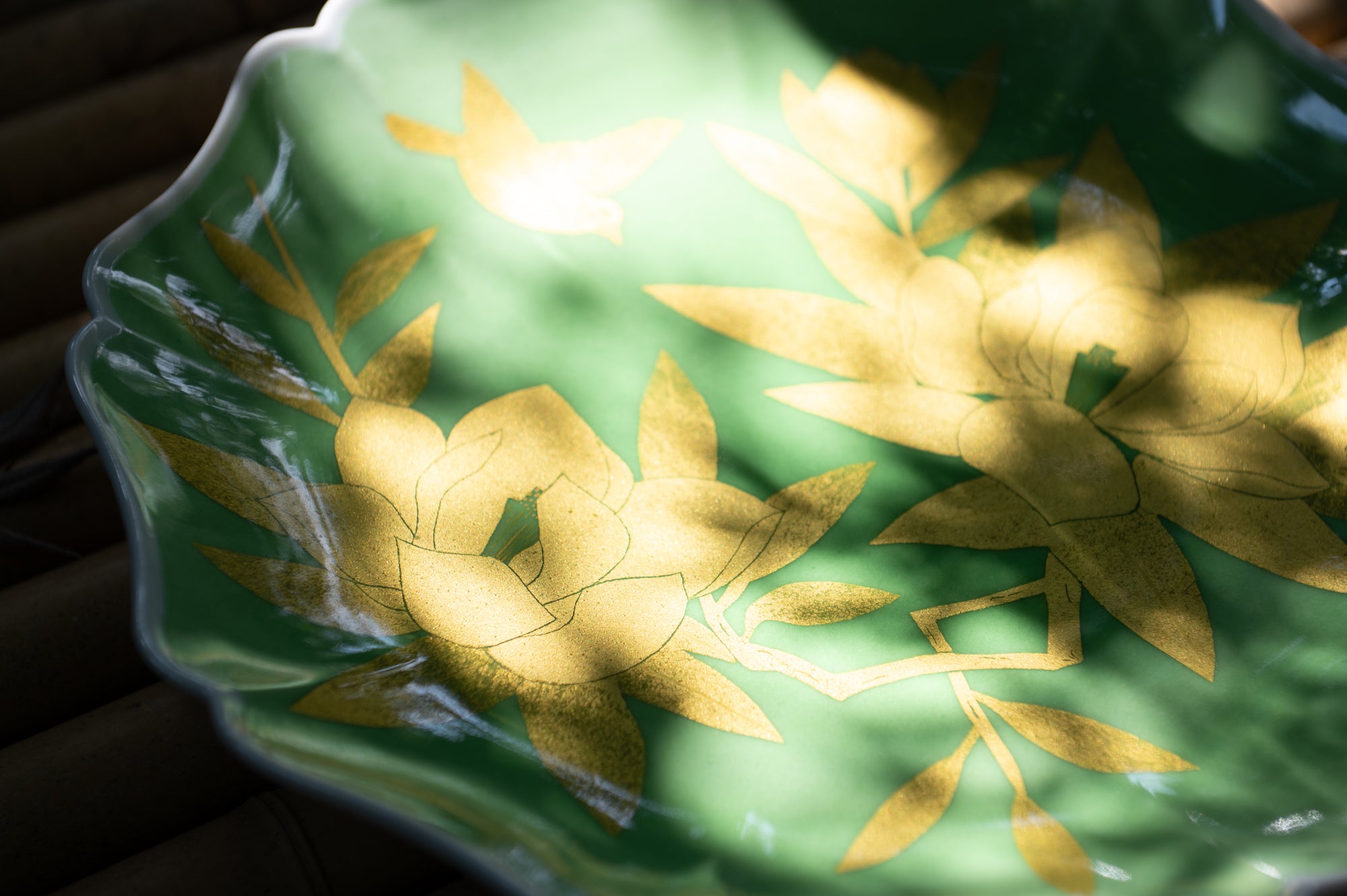


















Akae-Saibyo Sarasa Sake Cup
This sake cup, adorned with intricate red patterns by Fukushima Reiko, showcases her exceptional artistry. While the design initially appears simple, it features a central motif inspired by sarasa pattern, with shippo patterns on the sides and inside. Sarasa traditionally refers to Indian cotton fabric with colorful patterns of people, animals, and plants, similar to chintz or calico. The addition of blue and green hues alongside the red creates a captivating depth and complexity. Randomly placed stippling on the cup's surface enhances its handcrafted warmth and charm.
Akae-saibyo is a refined Kutani ware technique originating in the Edo period (1603 CE–1868 CE). Mastered at the Miyamoto Kiln, this art form employs bengara, a red iron oxide pigment, to meticulously depict birds, flowers, landscapes, and human figures. While some pieces are enhanced with gold accents, the core of akae-saibyo lies in its monochromatic red palette. Renowned for its exceptionally fine lines, often as thin as 0.1 mm (0.004 in), artisans manipulate line density to create subtle variations in red hue, adding depth and richness to their designs.
DETAIL
| Quantity | 1 |
| Size | D 5.5 cm (2.2 in) x H 4 cm (1.6 in) |
| Capacity | 40 ml (1.4 oz) |
| Material | Porcelain |
| Package Type | Wooden box |
| Microwave | No |
| Dishwasher | No |
Origin
Choose options



















Collection

Interview

Concept

International Shipping
Multiple International Shipping Options
Discounted shipping for over 500000!
Free shipping for over 5000000!
Insured shipping service
Full compensation for any damage during transit.
Made by Japanese craftsmen
Fair Pricing, free Furoshiki wrapping!

